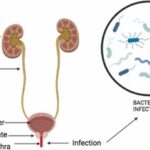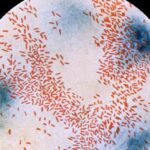Acute Haemophilus influenzae bacterial sinusitis is a significant cause of upper respiratory tract infections, particularly in individuals with compromised immune function. This Gram-negative bacterium is a leading pathogen in bacterial sinus infections, causing inflammation, nasal congestion, and persistent sinus pain. Understanding its pathophysiology, risk factors, symptoms, and treatment options is crucial for effective management.
Pathophysiology of H. influenzae-Induced Sinusitis
H. influenzae colonizes the upper respiratory tract and, under favorable conditions, invades the sinus mucosa, leading to infection and inflammation. The resulting immune response causes mucus buildup, sinus pressure, and discomfort.
Risk Factors
Several factors increase susceptibility to acute H. influenzae sinusitis, including:
- Weakened Immune System: Conditions such as diabetes or immunosuppressive treatments.
- Recent Upper Respiratory Infections: Viral infections create a conducive environment for bacterial overgrowth.
- Allergic Rhinitis: Chronic nasal inflammation predisposes individuals to bacterial infections.
- Smoking and Air Pollution: Damage to mucosal barriers increases infection risk.
- Anatomical Abnormalities: Deviated nasal septum or nasal polyps may obstruct sinus drainage.
Clinical Symptoms
Patients with acute H. influenzae bacterial sinusitis typically present with:
- Persistent Nasal Congestion: Blocked nasal passages leading to breathing difficulties.
- Thick Yellow or Green Nasal Discharge: Indicative of bacterial infection.
- Facial Pain and Pressure: Concentrated around the forehead, cheeks, and eyes.
- Headache and Fever: Systemic signs of infection.
- Postnasal Drip and Cough: Persistent irritation of the throat.
Diagnosis
1. Clinical Evaluation
- Patient history and symptom duration assessment.
- Physical examination focusing on sinus tenderness and nasal discharge.
2. Imaging Studies
- CT Scan of the Sinuses: Detects sinus fluid buildup and anatomical blockages.
- X-ray (Less Common): Identifies air-fluid levels in the sinuses.
3. Microbiological Testing
- Nasal or Sinus Culture: Identifies H. influenzae presence and antibiotic susceptibility.
- Blood Tests (If Severe): Evaluates systemic infection markers.
Treatment Strategies
1. Antibiotic Therapy
- First-line antibiotics: Amoxicillin-clavulanate, cefuroxime, or doxycycline.
- Alternative options: Macrolides (azithromycin, clarithromycin) for penicillin-allergic patients.
- Beta-lactamase inhibitors: Combat antibiotic-resistant H. influenzae strains.
2. Symptomatic Management
- Nasal Decongestants: Oxymetazoline or pseudoephedrine for temporary relief.
- Saline Nasal Irrigation: Flushes out excess mucus and pathogens.
- Pain Relievers: Acetaminophen or ibuprofen for headache and facial pain relief.
- Intranasal Corticosteroids: Fluticasone or mometasone to reduce inflammation.
3. Surgical Interventions
- Sinus Drainage (Endoscopic Surgery): For recurrent or treatment-resistant cases.
- Balloon Sinuplasty: Minimally invasive procedure to open sinus passages.
Prevention Strategies
- Vaccination: H. influenzae type B (Hib) vaccine in at-risk populations.
- Good Nasal Hygiene: Regular saline rinses to prevent bacterial colonization.
- Avoiding Irritants: Reducing exposure to smoke and pollutants.
- Managing Allergies: Controlling allergic rhinitis reduces infection risk.
- Hand Hygiene and Infection Control: Prevents bacterial spread.
Prognosis and Complications
Without proper treatment, acute H. influenzae sinusitis can lead to:
- Chronic Sinusitis
- Orbital Cellulitis
- Meningitis
- Brain Abscess
- Septicemia
Timely intervention improves outcomes and reduces recurrence.
Acute Haemophilus influenzae bacterial sinusitis is a severe infection requiring prompt diagnosis and targeted treatment. Effective antibiotic therapy, symptom management, and preventive measures are key to reducing disease burden and improving patient health outcomes.

